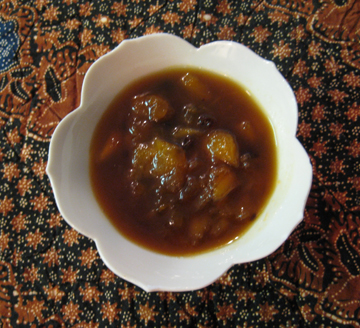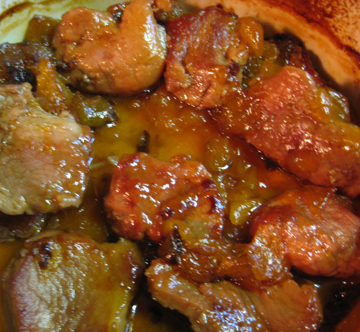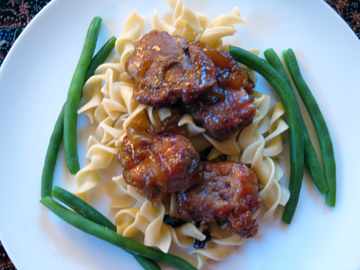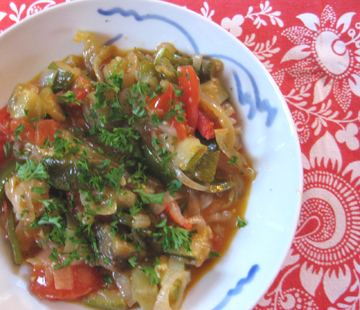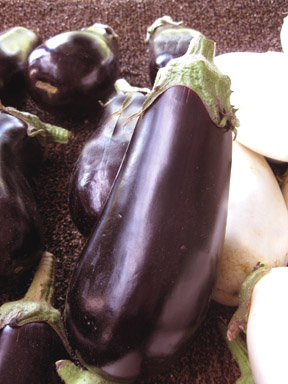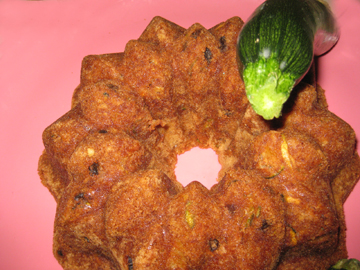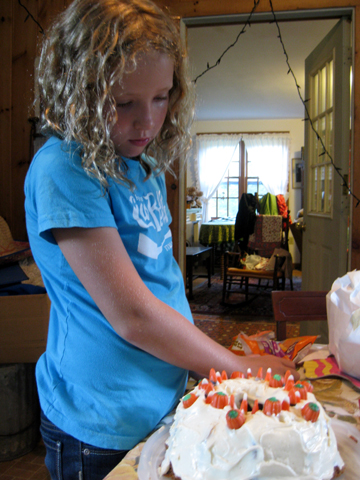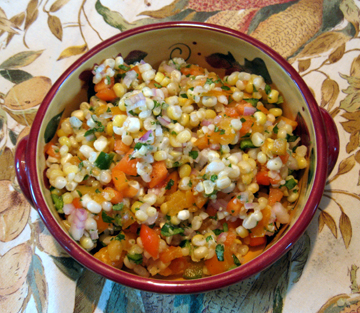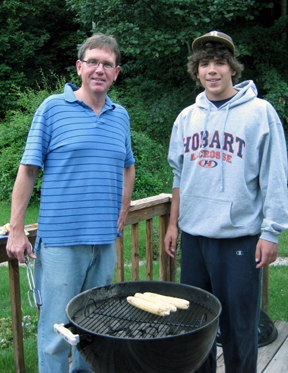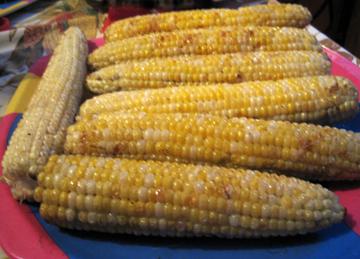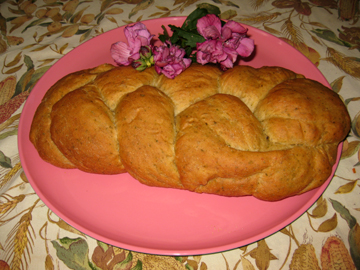
My roses have gone by so I had to serve Bread and Roses of Sharon!
I sang “Bread and Roses” in church yesterday in honor of Labor Day.
The words to this song came from a 1911 poem by James Oppenheim, commonly associated with a bitter textile strike in Lawrence, Massachusetts, in the winter of 1912.
Legend has it that women striking in Lawrence carried signs that read, “Give us bread and roses too.”
The poem speaks in the voice of women strikers who long for a more just world in which they will be given not merely enough to eat but also enough to nourish their spirits.
“Bread and Roses” reflects the era in which it was written. It is idealistic about the role of women in society, shot through with the passion of the progressive movement, and mindful of the disparity of wealth that characterized early 20th-century America.
Here is a stanza of the song:
As we go marching, marching, we bring the greater days.
The rising of the women means the rising of the race.
No more the drudge and idler,
Ten that toil where one reposes,
But a sharing of life’s glories:
Bread and roses, bread and roses.
Oppenheim’s words have been set to at least two tunes. The version with which I am more familiar is the newer of the two. It was written in the 1970s by Mimi Farina. Farina started a nonprofit group in San Francisco called Bread and Roses, which brings music to people in institutions like prisons, hospitals, and rest homes.
Her version of “Bread and Roses” is performed every year at my alma mater, Mount Holyoke College, by the graduating seniors. On the day before they graduate they wind their laurel chain around the grave of Mary Lyon, the college’s founder, and sing all four verses of the song.

2009 Seniors with the Laurel Chain (Courtesy of Mount Holyoke College)
This tradition always touches me. It connects these young women to other Mount Holyoke graduates–some of whom march in the laurel parade with them every year.
It also connects even the most aristocratic of the seniors to working people everywhere. Mount Holyoke has a long tradition of training its students to reach out to others; Washington Monthly recently ranked the college second in the nation at contributing to the good of the country.
Mostly it reminds the seniors (and those who listen to them sing) that college, life, and justice are about more than just making a living–that to be happy, healthy, and good we must enrich the soul as well as the body.
Hearts starve as well as bodies.
Give us bread, but give us roses.
In honor of Labor Day, then, here is a seasonal bread recipe. I’m afraid you’ll have to supply the roses yourself! Read a book. Listen to music. Work in your garden. Walk in the woods. In short, do something that will make you happy….
Pesto Bread
This recipe is very flexible. If you are overwhelmed by your basil crop, double the pesto you add. Use all-basil or all-parsley pesto. (I only mixed them because I ran out of basil!) Use more whole-wheat flour for healthier bread. Use less for more delicate bread.
If you don’t want to braid your bread, put it in traditional loaf pans (greased, please). I braided mine because my friend Anna and her daughter Maija were around to help.
But don’t forget the roses!
Ingredients:
for the pesto:
1 generous tablespoon pine nuts (or walnuts or pecans if you’re out of pine nuts)
1 garlic clove, roughly chopped
1 teaspoon salt
1 cup mixed basil and parsley leaves, packed
enough extra-virgin olive oil to moisten the basil (about 1/4 cup)
1/4 cup grated Parmesan or Romano cheese
for the bread:
1 packet active dry yeast
1/4 cup lukewarm water
1 tablespoon sugar
1 cup milk
1 cup hot water
6 cups flour (I used 1-1/2 cups King Arthur Flour white whole wheat and the rest KAF all-purpose), plus a bit more for kneading
1 teaspoon salt
1 recipe pesto
a sprinkling of cornmeal
Instructions:
First, prepare your pesto. Place the nuts, garlic, and salt in a small grinder or a blender, along with some of the herb leaves. Add a little bit of olive oil, and pulverize. Continue adding herb leaves and oil until you have transformed all of the leaves into a paste. Stir in the cheese and set aside.
Next, proof the yeast in the lukewarm water in a small bowl, along with the sugar. This will take about 5 minutes.
Combine the milk and hot water and make sure that the combination is lukewarm (if it isn’t heat it briefly on the stove). In a large separate bowl, combine the flour and salt. Briskly stir in the dissolved yeast and the liquids; then stir in the pesto.
Place the dough on a lightly greased or floured surface, put a little oil on your hands, and knead the dough for about 8 minutes, until it feels just right. You may add a little more flour as you knead, but try not to add too much.
Transfer the dough to a greased bowl and cover it with a damp towel. Let it rise until it puffs up and just about doubles in bulk. This will probably take an hour or more.
Gently deflate the dough with your hands, and cut it in two with a serrated knife.
Place each half in turn on an oiled board, and shape it into a rectangle. Cut the rectangle in three at every spot except the very top so that you can braid it (I know I’m not phrasing this very elegantly, but the photo below should help). Braid the bread.
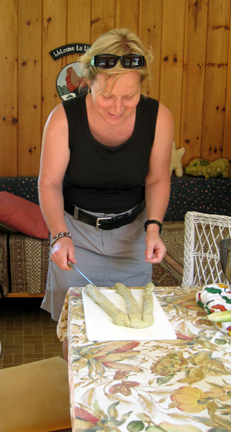
Anna prepares to braid bread.
Place each braid on a cookie sheet on which you have dusted cornmeal. Allow the braids to rise again until they have doubled in bulk–about an hour.
Bake the braids in a preheated 350-degree oven for 35 to 40 minutes, until they are a light golden brown. Makes 2 braids.
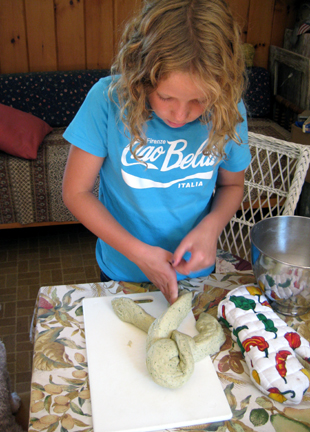
Maija concentrates on braiding.
If you enjoyed this post, please consider taking out an email subscription to my blog. Just click on the link below!
Subscribe to In Our Grandmothers’ Kitchens by Email.
